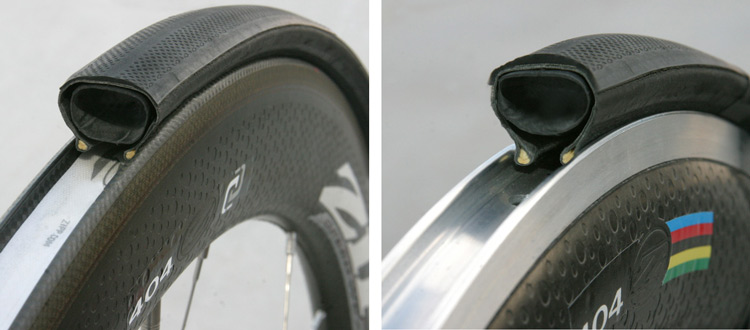In Reply To:
In Reply To:
In Reply To:
If they don't make a 1080 in Firecrest when would you purchase a 1080 over a Firecrest 808?
I would guess that the Firecrest 808 would be more aero in most if not all conditions than a 1080. Is this true?
I think the 1080 is still a faster wheel at lower yaw angles (i.e. for faster riders).
Aye...but therein lies the 1080 conundrum...at low yaw angles there's a plethora of wheel/tire combos that are as fast or faster (think
narrow for low yaw angles) AND lighter (if the course dictates that as a concern), and then when the wind starts coming up and adding more of an off-axis component, there are wheel/tire combos that not only are as fast or faster (i.e. the 808 FC), but also are easier to handle (my experience with a 1080 clincher is that it's a bit "twitchy" with even small crosswinds).
Given "unlimited resources", I'm having a hard time thinking of a case where I'd pick a 1080 over some other wheel/tire combo. My guess is that the 1080 will slowly "fade away"...
Given unlimited resources I also think you can find better wheels for many situations, however, you will probably have to use 2-3 different wheels depending on the circumstances. From what I can find of information (and this is admittedly a bit limited given the only drag vs. yaw graph I remember I have seen for the 1080 is the one on HED's site), the 1080 seems like a very fast wheel in the 5-10 degrees yaw window. Below 5 degrees many deep and narrow wheel/tire combinations will probably be faster and at higher yaw than 10 degrees something like a H3 or the 808 FC probably come out on top.
It is worth noting that Kraig Willet is seemingly very happy about the aerodynamics of the 1080 -
link. Granted, there's no specific information about test protocol or drag at different yaw angles, but given how he has tested a lot of wheels and been in the business a long time I give his ratings some credit.
Given that I can borrow both a 1080, a 808 Zedtech and a FFWD F9R (90 mm) to test against my H3 I will probably do some testing on my own when I have got myself a powermeter (and gladly share the results, if anyone is interested). Of course, field testing is not the best way to try to test drag vs. yaw, but one can always try and get some repeatable measurements on a day with steady crosswind :) Has anyone actually tried that?
